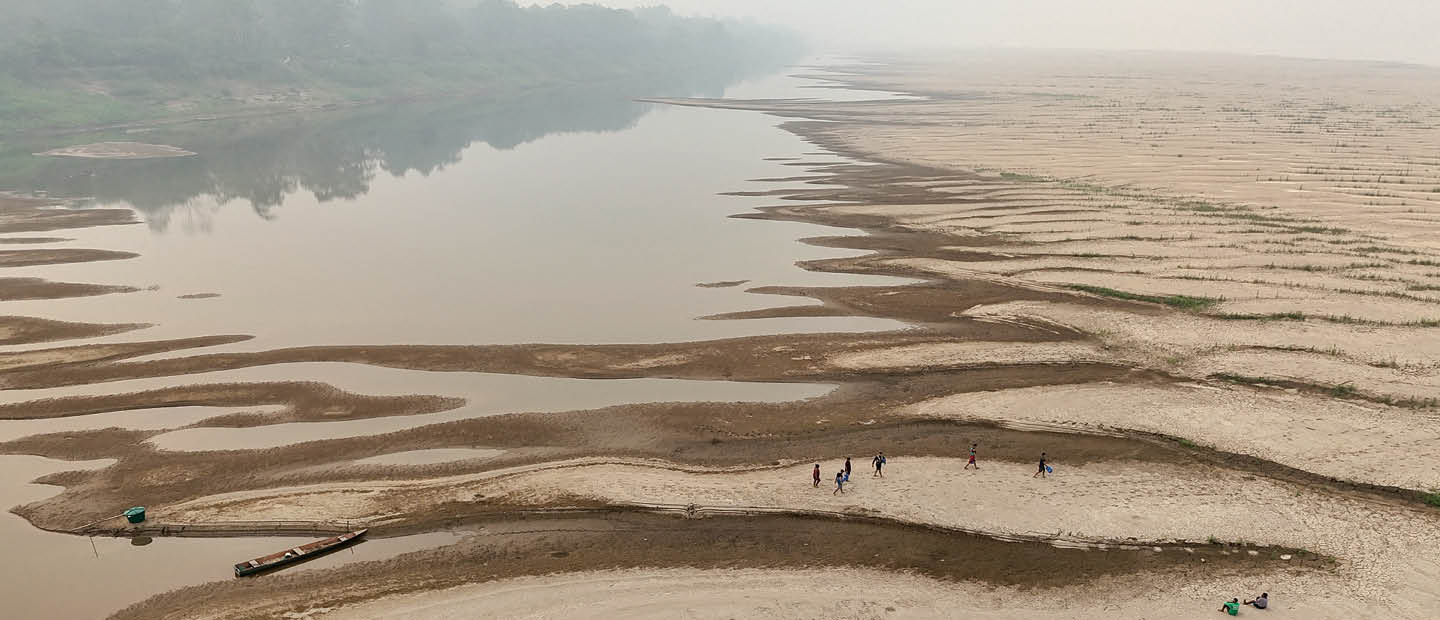Jim McMahon
Water levels in Brazil are dangerously low. As of late September, the nation faced its most intense and widespread drought since recordkeeping began in 1950, according to the Brazilian government. This photo shows people carrying drinking water along a sandbank of the depleted Madeira River in the village of Paraizinho. More than a thousand Brazilian towns are on alert because of low humidity levels, and experts say the situation may not significantly improve for months. At the same time, the dry conditions have made wildfires worse, more than doubling the number compared with last year. Scientists say climate change has likely played a role in creating the hot and dry conditions for a drought. They also blame the deforestation of the Amazon: Trees help increase rainfall by releasing moisture back into the air, but over the past 50 years, loggers and developers have cut down about one-fifth of the rainforest. Dried-up waterways make life difficult for residents, as boats often get stranded on sandbanks, hindering the transportation of vital supplies such as food and drinking water. “We anchored the boat here, and it was stuck on dry land the next day,” fisherman Josué Oliveira, who lives in the town of Manacapuru, told Reuters. “We had no way to move it.”

